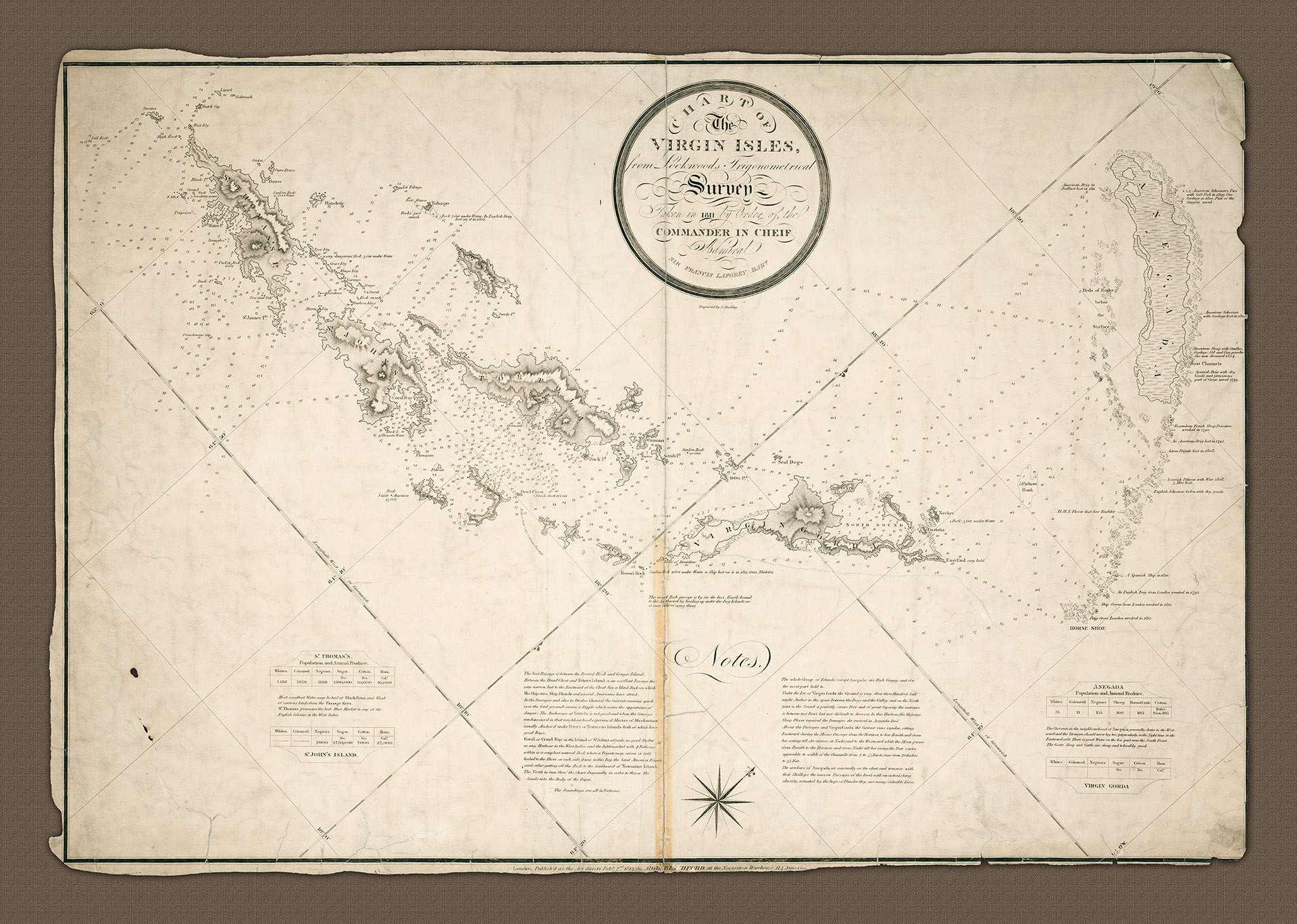A720 - Chart of the Virgin Isles
From Lockwood's Trigonometrical Survey Taken in 1811 by Order of the Commander In Chief Admiral Sir Francis Laforey this beautiful chart was produced by Robert Blachford at his Navigation Warehouse in London in 1813. Overall, this chart is one of the most informative to be found of the Virgin islands.
- 1813
Robert Blachford
- h29" x w40.5"
- L
The survey or chart is especially interesting for a number of reasons: First of all, the hydrographical information is very detailed and is accompanied by some excellent notes on the best channels and passages through the islands. The notes specify where the best anchorages are and even offer a guide as to what may be expected in certain places; 'In the passages and also in Drakes Channel the Current running quick over foul ground causes a Ripple which wears the appearance of danger'.
The chart contains several remarks at places where ships have previously struck upon rocks and also where there are sunken rocks which offer a hidden danger. The safest channels are similarly marked; 'the round Rock passage is by far the best, Vessels bound to the Northward but hauling up under the Dog Islands are at once clear of everything'.
Another obvious feature of the chart is the inclusion of data relating to the annual produce of four of the Islands: St. Thomas's, St. John's, Anegada and Virgin Gorda (this latter table is incomplete). Even a quick glance at the information provided on St. Thomas's and St. John's, as to their annual rum produce, is in itself quite staggering. The island of Anegada is in itself quite remarkable, not so much for the produce but for the number of shipwrecks listed around its western shoreline.
In 1784 the number of settlers on the island had been recorded at three families and their slaves. Tradition has them having first reached the island as far back as 1776. By 1811 the population had risen but it is clear that they were not all just farmers. Indeed the profession of 'wrecking' was a long established 'trade' in both the Caribbean and the Bahamas (Heritage Charts A723).[1]
Blachford is careful, and generous, in his notes to comment that 'The wreckers of Anegrada are constantly on the alert and traverse with their Shallops the narrow Passages of the Reefs with astonishing alacrity, actuated by their hope of Plunder they save many valuable lives.
It is worth noting that the well known London publishers Laurie and Whittle, in their version of the chart (Heritage Charts A706)'The Virgin Islands, Trigonometrically Surveyed ...', published the following year (1816), included exactly the same detail of shipwrecks on Anegada as seen here. The most likely explanation for which is that the information was included originally by Lockwood from whom both charts drew their data.
Like all great maps and charts there is always more to see and notice with every viewing.
[1]. Wreckers were known not just to have waited for a passing ship to strike a reef but to deliberately lure vessels on to the rocks by using fires and lanterns. Having grounded the vessel they would then plunder its cargo.
- Chart of the Virgin Isles


